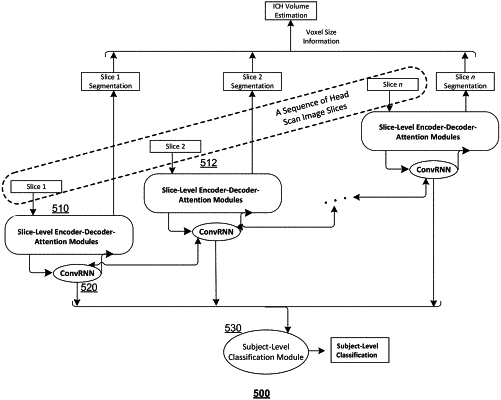| CPC G06T 7/0012 (2013.01) [A61B 5/0042 (2013.01); A61B 5/02042 (2013.01); A61B 5/7264 (2013.01); G06F 18/24 (2023.01); G06N 3/044 (2023.01); G06N 3/08 (2013.01); G06T 1/0007 (2013.01); G06T 7/11 (2017.01); G06T 11/003 (2013.01); G06V 10/764 (2022.01); G06V 10/82 (2022.01); G06T 2207/10081 (2013.01); G06T 2207/20081 (2013.01); G06T 2207/20084 (2013.01); G06T 2207/30016 (2013.01); G06T 2207/30101 (2013.01)] | 20 Claims |

|
1. A system for detecting a medical condition of a subject, comprising:
a communication interface configured to receive a sequence of images acquired from the subject by an image acquisition device and an end-to-end multi-task learning model, the end-to-end multi-task learning model comprising an encoder, a Convolutional Recurrent Neural Network (ConvRNN) and at least one of a decoder or a classifier; and
at least one processor, configured to:
extract feature maps from the images using the encoder;
capture contextual information between adjacent images in the sequence using the ConvRNN; and
detect the medical condition of the subject using the classifier based on the extracted feature maps and the contextual information or segment at least one image in the sequence using the decoder to obtain a region of interest indicative of the medical condition based on the extracted feature maps.
|